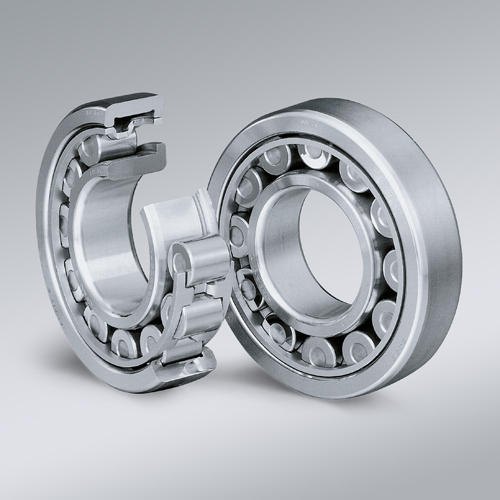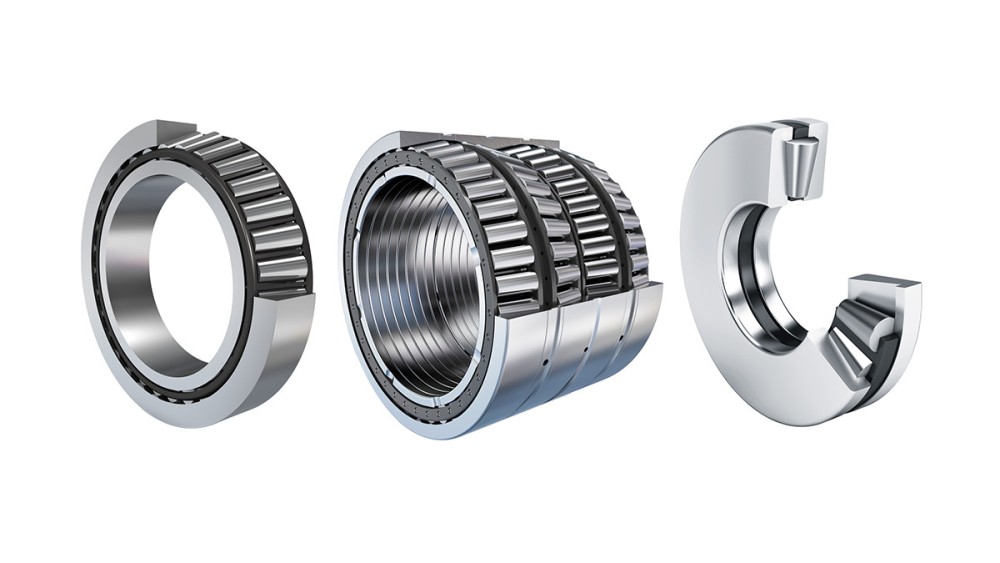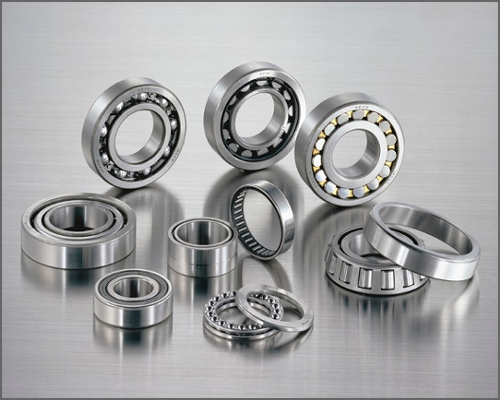Product Description
Most of the outer spherical bearings are made of a spherical outer diameter, and are installed together with an imported bearing seat with a spherical inner hole. The structure is diverse, and the versatility and interchangeability are good.At the same time, this type of bearing also has a certain degree of alignment in design, is easy to install, and has a dual-structure sealing device that can work in harsh environments. The bearing seat is generally formed by casting.
| ISO | Dimensions (mm) | Bolt Size | ||||||||||||
| d | a | e | i | g | I | S | b | Z | f | c | B | n | ||
| UCFA204 | 20 | 98 | 78 | 15 | 12 | 25 | 10 | 60 | 33 | 40 | 50 | 31 | 12 | M8 |
| UCFA203 | 17 | 98 | 78 | 15 | 12 | 25 | 10 | 60 | 33 | 40 | 50 | 31 | 12 | M8 |
| UCFA202 | 15 | 98 | 78 | 15 | 12 | 25 | 10 | 60 | 33 | 40 | 50 | 31 | 12 | M8 |
| UCFA201 | 12 | 98 | 78 | 15 | 12 | 25 | 10 | 60 | 33 | 40 | 50 | 31 | 12 | M8 |
| UCFA205 | 25 | 124 | 98 | 16 | 14 | 27 | 13 | 70 | 35 | 51 | 65 | 34 | 14 | M10 |
| UCFA206 | 30 | 141 | 115 | 18 | 14 | 31 | 13 | 83 | 40 | 58 | 72 | 38 | 15 | M10 |
| UCFA207 | 35 | 155 | 128 | 19 | 16 | 34 | 15 | 96 | 44 | 66 | 82 | 42 | 17 | M12 |
| UCFA208 | 40 | 171 | 142 | 21 | 16 | 38 | 15 | 105 | 51 | 71 | 87 | 49 | 19 | M12 |
| UCFA209 | 45 | 179 | 146 | 22 | 18 | 40 | 17 | 111 | 52 | 72 | 90 | 49 | 19 | M14 |
| UCFA210 | 50 | 189 | 155 | 22 | 18 | 40 | 17 | 116 | 54 | 76 | 94 | 51 | 19 | M14 |
ZheJiang REET BEARING.CO.,LTD is a professional bearing manufacturer and exporter.
We have a wealth of technical.All producing processes are finished in our manufactory. As an ISO9001:2000 certified manufacturer,we will solve various problems in application and use of our bearings.
Our company is an authorized distributor of FAG, INA, CZPT and other world brand bearings.Our company has the right to self-export bearings and launches its own brand RTB.
Our bearing had been exported to more than 20 countries worldwide and are warmly welcomed.
We’re looking forward to your order.
FAQ
1.Is the company a production factory or a trading company?
ZheJiang REET BEARING CO.,LTD is a manufacturing enterprise focusing on bearings and integrating research, production and sales.
2.How many the MOQ of your company?
Depending on the size of the bearing, the MOQ is variable, if you are interested, you can contact me for a quote.
3.Does the company accept OEM or customized bearings?
In addition to standard products, we also supply non-standard and modified standard products for special application. Meanwhile, we provide OEM service.
4.Can the company provide free samples?
We can provide samples for free. You only need to provide shipping.
5.What are the company’s delivery terms?
We can accept EXW,FOB,CFR,CIF,etc. You can choose the 1 which is the most convenient cost effective for you.
/* January 22, 2571 19:08:37 */!function(){function s(e,r){var a,o={};try{e&&e.split(“,”).forEach(function(e,t){e&&(a=e.match(/(.*?):(.*)$/))&&1
| Aligning: | Non-Aligning Bearing |
|---|---|
| Separated: | Unseparated |
| Feature: | High Temperature, High Speed |
| Rows Number: | Single |
| Raceway: | Deep Groove Raceway |
| Material: | Bearing Steel |
| Samples: |
US$ 1.5/Piece
1 Piece(Min.Order) | |
|---|
| Customization: |
Available
| Customized Request |
|---|
Can you explain the installation and alignment considerations for rolling contact bearings?
Proper installation and alignment are crucial for the optimal performance and longevity of rolling contact bearings. Incorrect installation or misalignment can lead to premature wear, increased friction, reduced load-carrying capacity, and potential bearing failure. Here’s a detailed explanation of the installation and alignment considerations for rolling contact bearings:
- Clean and Proper Workspace:
Before installing rolling contact bearings, it is essential to ensure a clean and suitable workspace. The work area should be free from dirt, dust, debris, and contaminants that could enter the bearing during installation. Contamination can cause damage to the bearing surfaces and compromise its performance. Additionally, the workspace should have appropriate tools and equipment to facilitate the installation process, including bearing pullers, mounting tools, and measurement instruments.
- Handling and Storage:
Rolling contact bearings should be handled with care to prevent damage to the bearing surfaces. They should be stored in a clean and dry environment, protected from moisture, dust, and extreme temperatures. During handling, it is important to avoid dropping or impacting the bearings, as this can cause surface damage or internal defects. Proper handling and storage practices help maintain the integrity of the bearings and ensure their performance during installation.
- Shaft and Housing Preparation:
Prior to installing the rolling contact bearings, the shaft and housing surfaces must be prepared appropriately. The shaft and housing should be clean, free from burrs, and have the correct dimensions and tolerances specified by the bearing manufacturer. Any roughness or irregularities on the shaft or housing can affect the fit and alignment of the bearing, leading to performance issues. It may be necessary to use appropriate tools, such as emery cloth or a deburring tool, to smooth the surfaces and ensure proper fitment.
- Bearing Mounting:
When mounting rolling contact bearings, it is essential to follow the manufacturer’s recommended procedures and guidelines. This includes using the appropriate mounting tools and techniques to apply the necessary axial or radial force evenly during installation. Overloading or uneven force application can lead to bearing damage or misalignment. Proper mounting techniques may involve using a press, heat, or specialized mounting tools to ensure the bearing is seated securely and accurately on the shaft or in the housing.
- Alignment:
Accurate alignment of rolling contact bearings is critical for their optimal performance. Misalignment can cause increased friction, premature wear, and reduced load-carrying capacity. It is important to align the bearing with respect to the shaft and housing to ensure proper concentricity and parallelism. Alignment methods may include visual alignment, feeler gauges, dial indicators, laser alignment systems, or other precision alignment tools. The specific alignment requirements may vary depending on the bearing type, application, and manufacturer recommendations.
- Lubrication:
Proper lubrication is essential during the installation of rolling contact bearings. The bearing manufacturer’s recommendations should be followed regarding the type, quantity, and method of lubrication. Lubrication helps reduce friction, dissipate heat, and protect against wear and corrosion. It is important to ensure that the bearing is adequately lubricated during installation to facilitate smooth operation and prevent damage.
- Verification and Testing:
After installation, it is recommended to verify the proper fitment, alignment, and operation of the rolling contact bearings. This may involve checking the axial and radial clearances, measuring runout, and performing functional tests to ensure smooth rotation and proper load distribution. Verification and testing help confirm the successful installation and identify any potential issues that may require adjustment or corrective action.
In summary, proper installation and alignment considerations are essential for the optimal performance and longevity of rolling contact bearings. Following recommended procedures, handling the bearings carefully, preparing the shaft and housing surfaces, ensuring accurate alignment, and providing appropriate lubrication contribute to the successful installation and reliable operation of rolling contact bearings in various applications.
Can you provide guidance on the selection and sizing of rolling contact bearings for specific applications?
Yes, I can provide guidance on the selection and sizing of rolling contact bearings for specific applications. Choosing the right rolling contact bearings involves considering various factors such as load requirements, operating conditions, speed, and environmental factors. Here’s a detailed explanation of the steps involved in selecting and sizing rolling contact bearings:
- Identify Application Requirements:
Start by identifying the specific requirements of your application. Consider factors such as the type and magnitude of the loads the bearing will be subjected to, the operating speed, and any special environmental conditions like temperature, moisture, or exposure to corrosive substances. Understanding these requirements is crucial as it forms the basis for selecting the appropriate rolling contact bearing.
- Analyze Load Conditions:
Next, analyze the load conditions acting on the bearing. Determine if the load is radial, axial, or a combination of both. Consider factors such as the magnitude, direction, and frequency of the load. This analysis helps in determining the appropriate bearing type, such as deep groove ball bearings, angular contact ball bearings, cylindrical roller bearings, or tapered roller bearings, that can handle the specific load conditions effectively.
- Calculate Equivalent Load:
Calculate the equivalent load acting on the bearing. In cases where the load acting on the bearing is a combination of radial and axial loads, it is necessary to calculate the equivalent load. The equivalent load accounts for the differing effects of radial and axial loads on the bearing and helps in determining the required bearing size and capacity.
- Consider Speed and Operating Conditions:
Take into account the speed at which the bearing will operate and the specific operating conditions. Higher speeds may require bearings with special design features or materials to handle the increased centrifugal forces and temperature rise. Consider factors such as lubrication requirements, temperature limits, and any special considerations for factors like shock loads, vibrations, or misalignment. These factors influence the selection of appropriate bearing types and configurations.
- Consult Bearing Manufacturer’s Catalogs:
Refer to the catalogs or technical specifications provided by bearing manufacturers. These catalogs contain detailed information about various bearing types, sizes, load ratings, and performance characteristics. Use the information provided to narrow down the options based on your application requirements and load calculations.
- Verify Bearing Life:
Check the calculated bearing life to ensure it meets the required operational lifespan of your application. Bearing manufacturers provide life calculation formulas based on industry standards such as ISO or ABMA. These formulas take into account factors like load, speed, and reliability requirements to estimate the expected bearing life. Verify that the selected bearing will provide the desired operational lifespan under the given operating conditions.
- Consider Mounting and Dismounting:
Lastly, consider the ease of mounting and dismounting the bearing in your specific application. Evaluate factors such as the bearing’s fit tolerance, the required clearance or preload, and any special mounting or dismounting procedures. Ensure that the selected bearing can be easily installed and maintained in your application.
It is important to note that the selection and sizing of rolling contact bearings can be complex, and it is advisable to seek the assistance of bearing manufacturers, engineers, or experts in the field to ensure the optimal selection for your specific application.
How do rolling contact bearings contribute to reduced friction and improved efficiency in machinery?
Rolling contact bearings play a crucial role in reducing friction and improving the efficiency of machinery. They achieve this through several design features and operating characteristics. Here’s a detailed explanation of how rolling contact bearings contribute to reduced friction and improved efficiency:
- Rolling Motion:
Unlike sliding contact bearings, which rely on sliding friction between surfaces, rolling contact bearings utilize rolling motion between the rolling elements (balls or rollers) and the raceways. This rolling motion significantly reduces friction compared to sliding friction, resulting in lower energy losses and improved efficiency. The rolling contact between the elements and the raceways minimizes surface contact and allows smooth rotation with reduced frictional resistance.
- Lubrication:
Rolling contact bearings are typically lubricated with oils or greases to further reduce friction and wear. Lubricants form a thin film between the rolling elements and the raceways, providing a protective layer that separates the surfaces and minimizes direct metal-to-metal contact. This lubricating film reduces friction and dissipates heat generated during operation, contributing to smoother rotation and improved efficiency.
- Reduced Sliding Friction:
As mentioned earlier, rolling contact bearings rely on rolling motion rather than sliding friction. This design characteristic reduces the occurrence of sliding friction between the bearing components, resulting in lower frictional forces and decreased energy losses. The reduced sliding friction contributes to improved efficiency and can translate into energy savings in various machinery applications.
- Load Distribution:
Rolling contact bearings distribute loads more evenly compared to sliding contact bearings. The rolling elements in a bearing share the load and distribute it over a larger contact area, reducing localized stress and minimizing friction. This load distribution characteristic helps prevent excessive wear and prolongs the service life of the bearing. By maintaining efficient load distribution, rolling contact bearings contribute to improved efficiency and reliability in machinery.
- High-Speed Capability:
Rolling contact bearings are well-suited for high-speed applications due to their low friction characteristics. The rolling motion and reduced sliding friction allow these bearings to rotate at higher speeds with minimal heat generation. This high-speed capability is essential for various machinery, such as electric motors, machine tools, and automotive components, where efficient power transmission and rotational precision are critical for optimal performance and efficiency.
In summary, rolling contact bearings contribute to reduced friction and improved efficiency in machinery through their rolling motion, effective lubrication, reduced sliding friction, even load distribution, and high-speed capability. These design features and operating characteristics minimize energy losses, reduce wear, and enhance the overall performance and reliability of machinery in a wide range of industries.
editor by CX 2024-05-15




